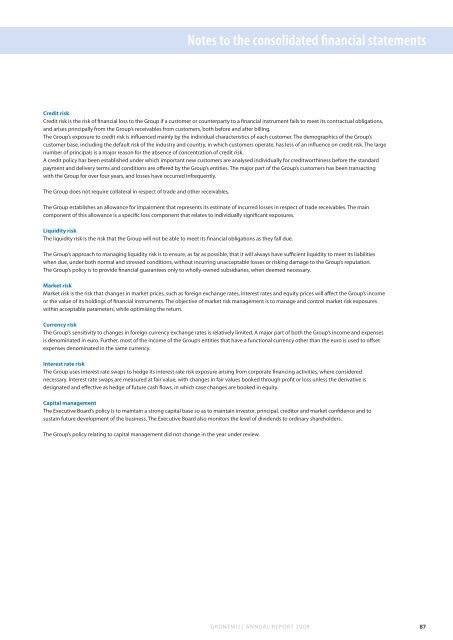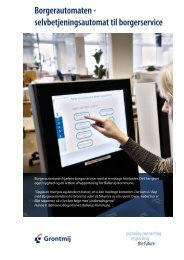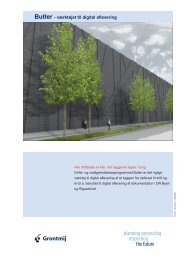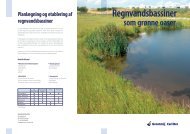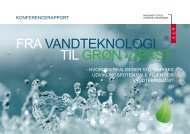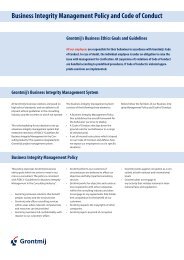Annual Report 2008 Sustainable design & engineering - Grontmij
Annual Report 2008 Sustainable design & engineering - Grontmij
Annual Report 2008 Sustainable design & engineering - Grontmij
Create successful ePaper yourself
Turn your PDF publications into a flip-book with our unique Google optimized e-Paper software.
Notes to the consolidated financial statements<br />
Credit risk<br />
Credit risk is the risk of financial loss to the Group if a customer or counterparty to a financial instrument fails to meet its contractual obligations,<br />
and arises principally from the Group’s receivables from customers, both before and after billing.<br />
The Group’s exposure to credit risk is influenced mainly by the individual characteristics of each customer. The demographics of the Group’s<br />
customer base, including the default risk of the industry and country, in which customers operate, has less of an influence on credit risk. The large<br />
number of principals is a major reason for the absence of concentration of credit risk.<br />
A credit policy has been established under which important new customers are analysed individually for creditworthiness before the standard<br />
payment and delivery terms and conditions are offered by the Group’s entities. The major part of the Group’s customers has been transacting<br />
with the Group for over four years, and losses have occurred infrequently.<br />
The Group does not require collateral in respect of trade and other receivables.<br />
The Group establishes an allowance for impairment that represents its estimate of incurred losses in respect of trade receivables. The main<br />
component of this allowance is a specific loss component that relates to individually significant exposures.<br />
Liquidity risk<br />
The liquidity risk is the risk that the Group will not be able to meet its financial obligations as they fall due.<br />
The Group’s approach to managing liquidity risk is to ensure, as far as possible, that it will always have sufficient liquidity to meet its liabilities<br />
when due, under both normal and stressed conditions, without incurring unacceptable losses or risking damage to the Group’s reputation.<br />
The Group’s policy is to provide financial guarantees only to wholly-owned subsidiaries, when deemed necessary.<br />
Market risk<br />
Market risk is the risk that changes in market prices, such as foreign exchange rates, interest rates and equity prices will affect the Group’s income<br />
or the value of its holdings of financial instruments. The objective of market risk management is to manage and control market risk exposures<br />
within acceptable parameters, while optimising the return.<br />
Currency risk<br />
The Group’s sensitivity to changes in foreign currency exchange rates is relatively limited. A major part of both the Group’s income and expenses<br />
is denominated in euro. Further, most of the income of the Group’s entities that have a functional currency other than the euro is used to offset<br />
expenses denominated in the same currency.<br />
Interest rate risk<br />
The Group uses interest rate swaps to hedge its interest rate risk exposure arising from corporate financing activities, where considered<br />
necessary. Interest rate swaps are measured at fair value, with changes in fair values booked through profit or loss unless the derivative is<br />
<strong>design</strong>ated and effective as hedge of future cash flows, in which case changes are booked in equity.<br />
Capital management<br />
The Executive Board’s policy is to maintain a strong capital base so as to maintain investor, principal, creditor and market confidence and to<br />
sustain future development of the business. The Executive Board also monitors the level of dividends to ordinary shareholders.<br />
The Group’s policy relating to capital management did not change in the year under review.<br />
GRONTMIJ | ANNUAL REPORT <strong>2008</strong> 87


